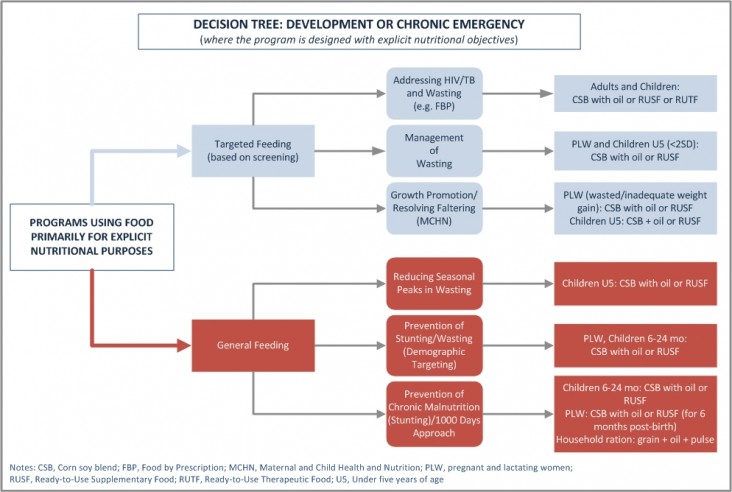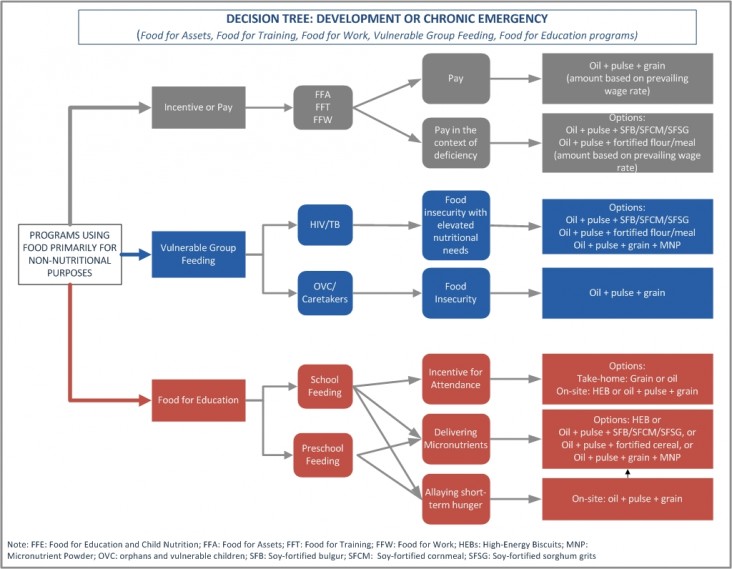- What We Do
- Agriculture and Food Security
- Democracy, Human Rights and Governance
- Economic Growth and Trade
- Education
- Ending Extreme Poverty
- Environment and Global Climate Change
- Gender Equality and Women's Empowerment
- Global Health
- Water and Sanitation
- Working in Crises and Conflict
- U.S. Global Development Lab
This update reflects the ongoing effort of USAID to improve the nutrition and overall quality of the food aid commodity basket, including upgrading products, improving programming and streamlining procurement processes. Many of the product, programming and process updates are based on the Food Aid Quality Review (FAQR), a two-year review and stakeholder consultation process culminating in recommendations based on a large and expanding body of scientific and programmatic evidence. This ongoing effort also includes work toward better harmonization with World Food Program (WFP) food aid products, programming and processes.
Products
- The Fact Sheets contain a focus on products fit for purpose and nutrition with guidance on where they are appropriate for use.
- The Fact Sheets contain all relevant Web-Based Supply Chain Management (WBSCM) codes that are used in United States Department of Agriculture (USDA) procurement, for ease of ordering.
- The Fact Sheets reflect an upgraded micronutrient premix for milled grains, upgraded fortified blended foods (FBFs), and soy-fortified products, as well as new fortification requirements for vegetable oil.
- The Fact Sheets reflect improved nutritional profiles for the corn soy blends and wheat soy blends as well as for other milled and soy-fortified products.
- New Fact Sheets have been added to reflect new product and product ingredient offerings, including:
o Defatted Soy Flour
o Dehydrated Potato Products
o Emergency Food Products (EFP)
o Ready-to-Use Therapeutic Foods (RUTF)
o Soy Protein Ingredients (Soy Protein Concentrate and Soy Protein Isolate)
o Textured Soy Protein
o Whey Protein Concentrate
- Future changes to the nutritional profile and list of available commodities in the Food for Peace catalogue will be reflected through regular updating.
Programming
- The Fact Sheets contain a Programming Guidance section with a summary of programming options for each commodity in emergency and development settings. This section was based on the decision trees at the end of the 2011 FAQR Report Delivering Improved Nutrition: Recommendations for Changes to U.S. Food Aid Products and Programs. The decision trees are displayed below:


- The Fact Sheets provide recommendations on the use of commodities as general food distribution and household and targeted rations for specific Title II programs.
- Note: the CRG Fact Sheets are designed to complement more detailed program guidance available from USAID/FFP, the Food Aid Technical Assistance – II (FANTA-II) Project and other resources.
Procurement Processes
- This update also reflects new processes in place for ordering, specifically the Web-Based Supply Chain Management (WBSCM) system, and provides relevant WBSCM codes for each product.
- The Fact Sheets link to updated USDA procurement and specifications documents, including USDA Commodity Requirements Documents (CRDs) and Commercial Item Descriptions (CIDs).
- The procurement process follows the steps below:
o Program is approved to request commodities for a specific month;
o Awardee enters their request(s) in WBSCM as sales orders;
o FFP/POD reviews, approves and routes sales orders to USDA/FSA/Washington;
o USDA/FSA/Washington reviews, approves and routes sales orders to USDA/FSA/KCCO;
o USDA/FSA/KCCO issues a solicitation based on approved sales orders.







Comment
Make a general inquiry or suggest an improvement.